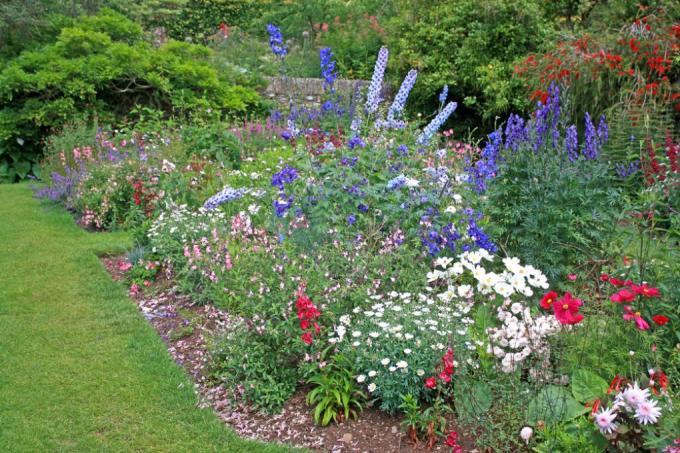Divide beds
First measure your bed and divide it into three plots. You should subdivide these further so that the segments do not exceed 120 centimeters in width. This ensures that you can easily reach the center when working.
also read
You now reserve a third for each of them
- heavy feeder,
- middle eater,
- weak feeder.
The bed areas structured in this way rotate over the years. So you don't have to develop the planting plan every season, you can simply add to it as needed.
choose favorite vegetables
Now choose different types of vegetables that you want to serve on your table. Make sure that these also match the prevailing weather conditions and soil requirements.
Also, match the types of vegetables to the available space. A zucchini plant and a pumpkin, for example, overgrow a not very large vegetable patch in a very short time. Depending on personal preferences, the limited space could be used pole beans or compact vine tomatoes might be better used.
To good neighbors
Through sensibly planned mixed cultivation, the vegetable varieties complement each other in their properties and are more resistant to diseases and pests.
However, some plants just don't like each other's greenery and don't want to grow well in the immediate vicinity or produce lower yields. For example, vegetables from the same plant family should never be grown side by side.
Which plants support each other in growth, can be found in special tables. There are also species that are considered neutral and can be planted under if no good neighbors are found.
pre and post culture
Involve in your planting plan also enter the cultures and distinguish between:
- preculture,
- main culture,
- postculture
as well as, if necessary, intermediate culture.
Example: Radishes are grown as a pre-culture. You then grow lettuce in that bed, followed by a fast-growing vegetable such as carrots. As an intermediate or post-culture can be optional green manure be sawn out, which gives back the power lost to the ground.
Tip
If you can't find a good neighbor, it's a good idea to sow a row of ornamental flowers between the vegetable plants. Well suited are jewelry baskets or zinnias, as they attract bees and other insects.











